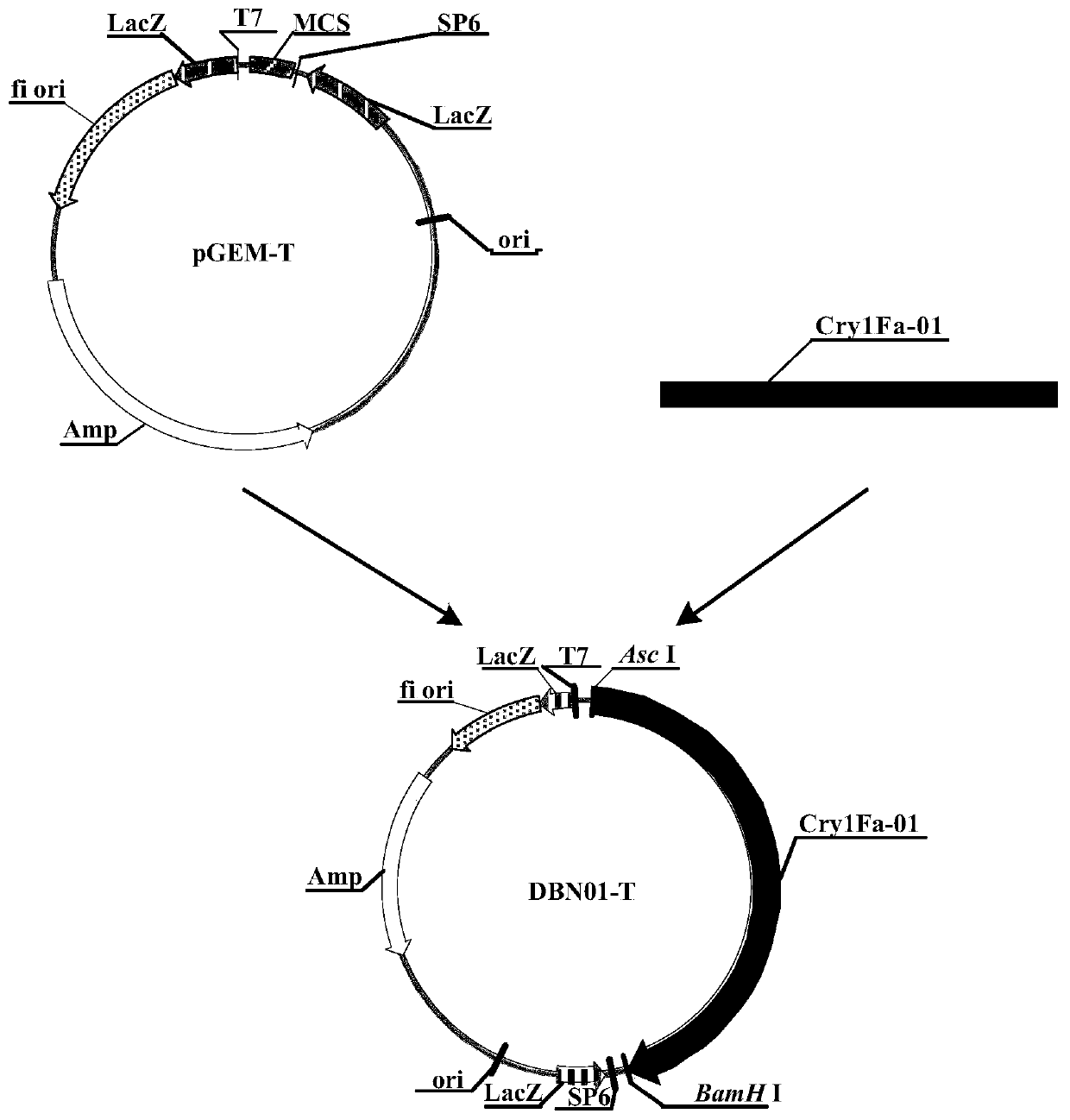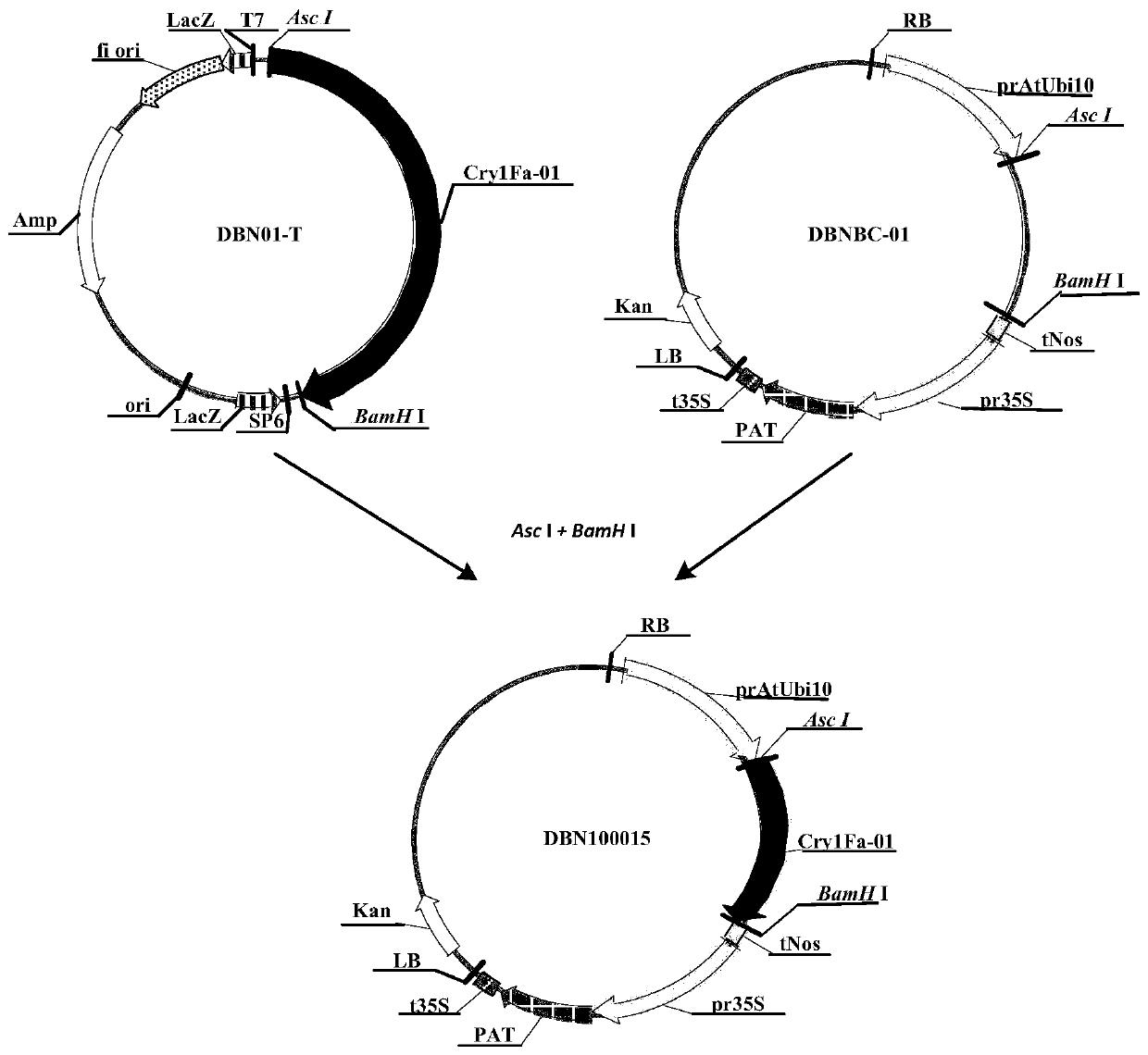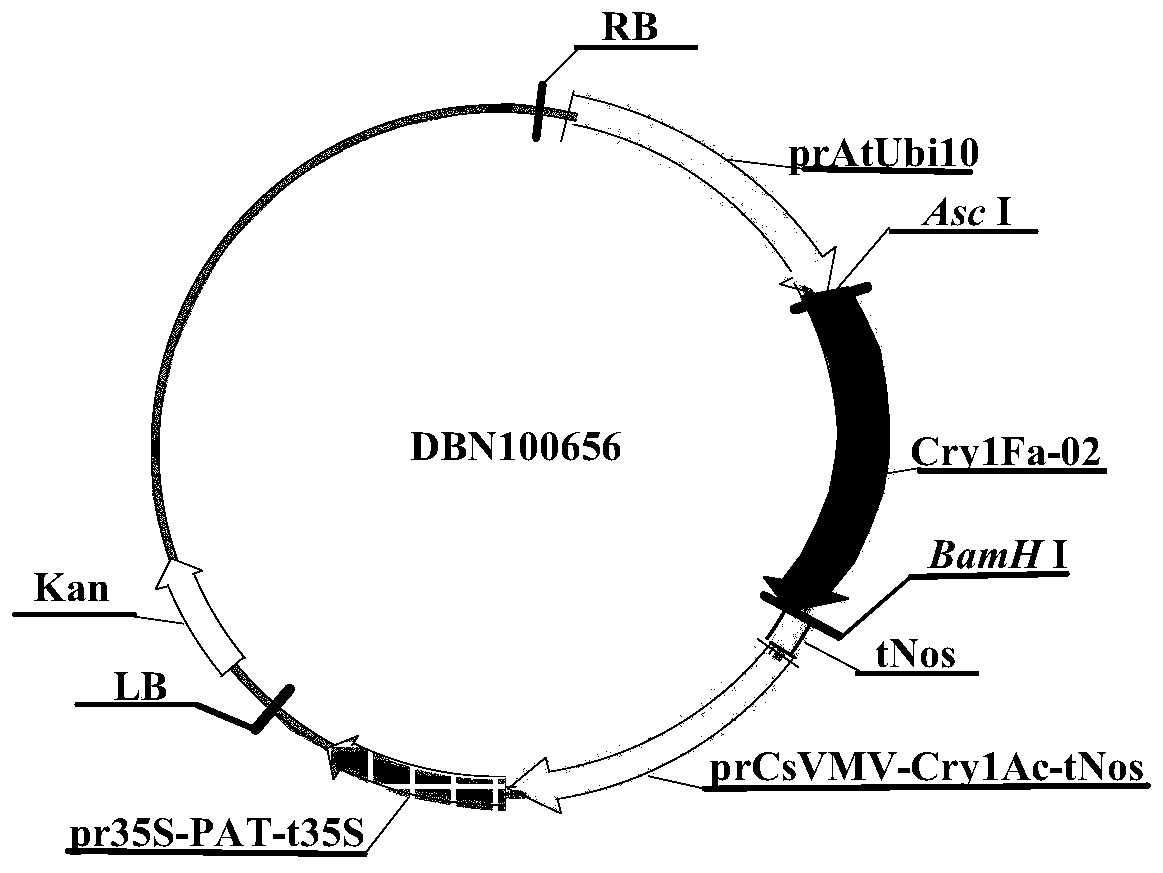Application of insecticidal proteins
A protein and pest technology, applied in the field of insecticidal protein
- Summary
- Abstract
- Description
- Claims
- Application Information
AI Technical Summary
Problems solved by technology
Method used
Image
Examples
no. 1 example
[0087] The first embodiment, the acquisition and synthesis of genes
[0088] 1. Obtain the nucleotide sequence
[0089] The amino acid sequence (605 amino acids) of Cry1Fa-01 insecticidal protein, as shown in SEQ ID NO:1 in the sequence listing; Cry1Fa-01 nucleotide sequence ( 1818 nucleotides), as shown in SEQ ID NO: 2 in the sequence listing; the amino acid sequence (1148 amino acids) of Cry1Fa-02 insecticidal protein, as shown in SEQ ID NO: 3 in the sequence listing; the encoding corresponds to the The Cry1Fa-02 nucleotide sequence (3447 nucleotides) of the amino acid sequence of the Cry1Fa-02 insecticidal protein is shown in SEQ ID NO:4 in the sequence listing.
[0090] The amino acid sequence (1156 amino acids) of Cry1Ac insecticidal protein, as shown in SEQ ID NO:5 in the sequence listing; Cry1Ac nucleotide sequence (3471 nucleotides) of encoding corresponding to the amino acid sequence of said Cry1Ac insecticidal protein , as shown in SEQ ID NO:6 in the sequence listi...
no. 2 example
[0093] The second embodiment, construction of recombinant expression vector and transformation of recombinant expression vector into Agrobacterium
[0094] 1. Construction of a recombinant cloning vector containing the Cry1Fa gene
[0095] The synthetic Cry1Fa-01 nucleotide sequence was connected to the cloning vector pGEM-T (Promega, Madison, USA, CAT: A3600), and the operation steps were carried out according to the instructions of the pGEM-T vector produced by Promega Company to obtain the recombinant cloning vector DBN01-T , its construction process is as follows figure 1 Shown (wherein, Amp represents the ampicillin resistance gene; f1ori represents the replication origin of phage f1; LacZ is the LacZ start codon; SP6 is the promoter of SP6 RNA polymerase; T7 is the promoter of T7 RNA polymerase; Cry1Fa-01 is the promoter of Cry1Fa -01 nucleotide sequence (SEQ ID NO: 2); MCS is the multiple cloning site).
[0096]Then, the recombinant cloning vector DBN01-T was transfor...
no. 3 example
[0107] The third embodiment, the acquisition of transgenic plants
[0108] 1. Obtaining transgenic soybean plants
[0109] According to the routinely used Agrobacterium infection method, the cotyledon node tissue of the aseptically cultivated soybean variety Zhonghuang 13 was co-cultured with the Agrobacterium described in 3 in the second embodiment, so that the soybean constructed in 2 in the second embodiment The T-DNA of recombinant expression vectors DBN100015, DBN100013 and DBN100656 (including Cry1Fa-01 nucleotide sequence, Cry1Fa-02 nucleotide sequence, Cry1Ac nucleotide sequence and PAT gene) were transferred into the soybean genome, and the transgenic Soybean plants with Cry1Fa-01 nucleotide sequence, soybean plants with Cry1Fa-02 nucleotide sequence, soybean plants with Cry1Ac-Cry1Fa-02 nucleotide sequence, and wild-type soybean plants as controls.
[0110] For Agrobacterium-mediated soybean transformation, briefly, mature soybean seeds were germinated in soybean ge...
PUM
| Property | Measurement | Unit |
|---|---|---|
| body length | aaaaa | aaaaa |
Abstract
Description
Claims
Application Information
 Login to View More
Login to View More - R&D
- Intellectual Property
- Life Sciences
- Materials
- Tech Scout
- Unparalleled Data Quality
- Higher Quality Content
- 60% Fewer Hallucinations
Browse by: Latest US Patents, China's latest patents, Technical Efficacy Thesaurus, Application Domain, Technology Topic, Popular Technical Reports.
© 2025 PatSnap. All rights reserved.Legal|Privacy policy|Modern Slavery Act Transparency Statement|Sitemap|About US| Contact US: help@patsnap.com



